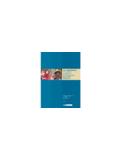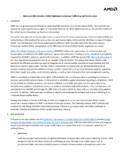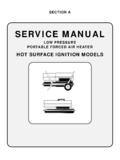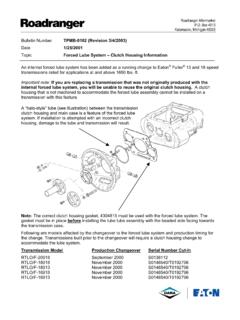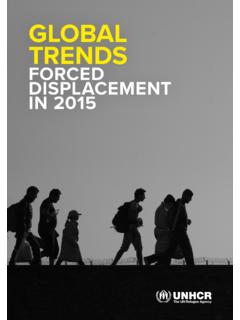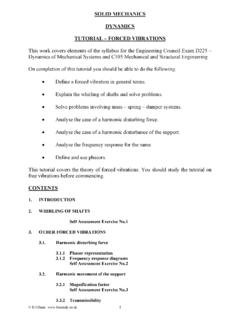Transcription of Need To Know Guidance: Working With Persons With ...
1 Working WITH Persons WITH DISABILITIES IN FORCED DISPLACEMENTNEED TO KNOW GUIDANCE 1 This document has been produced, to the greatest extent possible, to be accessible to Persons with print disability. Any part of the guidance may be reproduced, translated into other languages or adapted to meet local needs without prior permission of UNHCR, provided that all parts are distributed free of charge and UNHCR is acknowledged. 2011, United Nations High Commissioner for RefugeesDivision of International ProtectionUnited Nations High Commissioner for Refugees94, rue de Montbrillant1202 Geneva, SwitzerlandEmail: objective 2overview 3non-discrimination and participation: keys to protection 4key considerations 6key resources 18endnotes 20page 2objective Refugees1 with disabilities have specific needs and face particular forms of discrimination.
2 As highlighted in the Executive Committee Conclusion No. 110 (LXI) 2010, it is important for UNHCR to ensure that the rights of Persons with disabilities who are of concern to the Office are met without discrimination. This places an onus on officesto develop a thorough understanding of the circumstances of Persons with disabilities under their care. This note provides staff with guidance on a range of issues to consider in meeting these 3overview Persons with disabilities may suffer from one or more of the following: Long term physical, mental, intellectual or sensory impairments2 Injuries Chronic illnessesThese factors, combined with social, cultural, physical, economic, and political discrimination, hinder their equal participation in society.
3 During crises and displacement, discrimination is often World Health Organization estimates that about 15% of the world s population has a Although no global figuresare available, this suggests that several million Persons who have disabilities are currently displaced by conflict or natural disaster. Persons with disabilities are not a homogeneous group; they have different capacities and needs, and contribute in different ways to their communities. When displaced, they have the same basic needs as other Persons . In addition, they may experience difficulty in moving, hearing, seeing, communicating or learning.
4 These difficulties amplify the often severe challenges posed by forced displacement. Persons with disabilities may also need additional protection. They are at heightened risk of violence, including sexual and domestic abuse; exploitation by family members; discrimination; and exclusion from access to humanitarian assistance, education, livelihoods, health care, a nationality,4 and other services. Women, the elderly, children, and LGBTI5 Persons with disabilities may be exposed to even higher risks. For this reason it is essential to apply an Age, Gender and Diversity approach, if UNHCR is to achieve its commitment to ensure that all protection activities, including durable solutions, are accessible to and include Persons with disabilities.
5 Page 4non-discrimination and participation: keys to protectionAll Persons who are forcibly displaced face challenges. However, Persons with disabilities are at particular risk because they may be invisible, and because they are less able to participate actively in decisions that concern them and are less likely to have their protection needs ensure that Persons with disabilities do not suffer discrimination, staff should make themselves aware of their own preconceptions or attitudes towards disability and ensure that programmes are inclusive and participatory. Prejudice may stem from lack of knowledge about disability or the rights of Persons with disabilities.
6 Exclusion of Persons with disabilities during displacement can be inadvertent or purposeful: in either case, nevertheless, it is a high standard of protection is only possible if an inclusive and participatory approach is adopted. The inclusion of Persons with disabilities in policy formulation and consultation processes is key to developing and implementing appropriate solutions to the problems that they face. Consultation and participation through all phases of crises and protracted situations is essential. UNHCR should also make sure that Persons with disabilities are able to apply their skills and capacities to benefit themselves, their families and their communities.
7 Page 5action Consult and involve Persons with disabilities in decision making, programming, and leadership, giving them the means to voice their opinion and participate in the design, assessment, monitoring, and evaluation of activities. Build the capacity of Disabled Persons Organizations and other entities. Advocate for the inclusion of refugees with disabilities in national policies and actors must make every effort to create and sustain an inclusive environment for Persons with disabilities, and for their caregivers, families and communities. In addition, they must ensure that programmes and actions do not constitute or contribute to discrimination or 6key considerationsIn developing programmes and policies to address the protection and needs of refugees with disabilities, staff should have in mind the following areas of priority concern.
8 Introduce inclusive rights-based programmingPersons with disabilities should have the same opportunity as other displaced Persons to enjoy the full range of their human rights and participate in relevant programmes. International and national legal frameworks provide binding standards that set out the parameters of a non-discriminatory Ensure staff are aware of the rights of Persons with disabilities and give emphasis to the Convention on the Rights of Persons with Disabilities. Develop strategic partnerships with organizations that have relevant expertise. Provide training for UNHCR and partner staff to raise awareness of disability and attitudes about it and the rights of Persons with disabilities.
9 Build internal capacity to ensure that the programmes of UNHCR and its partners are inclusive and 7 Persons with disabilities have the right to be included in all humanitarian programming. In addition, they may require specific assistance because of their disability. It may be necessary to modify the physical environment, or provide care giving or devices that enable them to access assistance or participate fully in household and community a twin-track approach when planning responses to disability: Design all responses to be inclusive and accessible, including to Persons with disabilities.
10 Within the broader operational plan include targeted actions to address the specific needs of Persons with multi-sectoral approach is required to address all the risks, concerns, and needs Persons with disabilities may identify. They have the right to be consulted about and to participate in all humanitarian activities, including: Documentation, registration and legal status Fulfilment of basic needs (food, water, shelter, health provision, etc.) Distribution of food and non-food items Mechanisms to prevent and respond to SGBV and other key protection concerns Vocational (re)training, livelihoods and micro finance programmes Inclusive education Provision of information Provision of safe infrastructure, including shelter, schools, and sanitary facilities Durable solutionspage 8 UNHCR staff and partners should make all reasonable efforts to make sure that Persons with disabilities have access to services.









